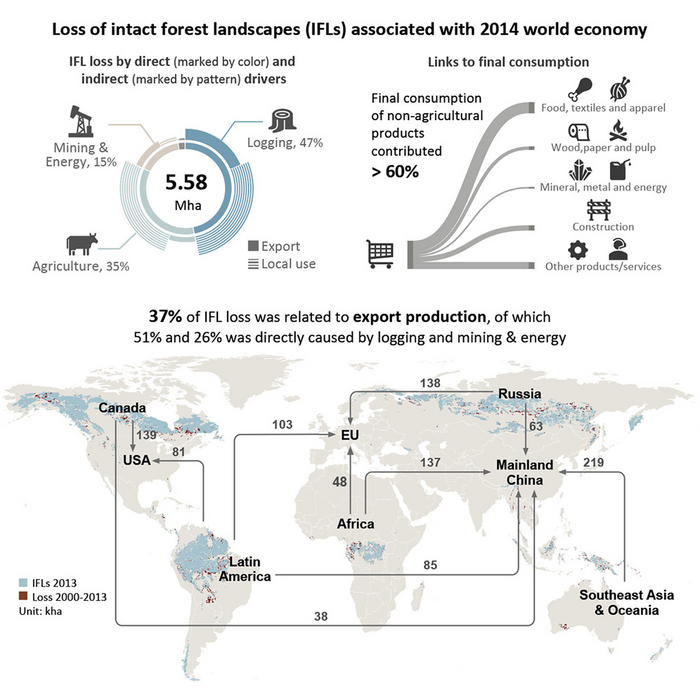While intact forests act as essential climate regulators and biodiversity hubs, they are disappearing fast. Agriculture is widely regarded as the primary cause of forest loss, but researchers argue that agriculture is not the only one to blame. The findings were published in the journal One Earth.
 Risk of intact forest landscape loss goes beyond global agricultural supply chains. Image Credit: One Earth/Kan et al.
Risk of intact forest landscape loss goes beyond global agricultural supply chains. Image Credit: One Earth/Kan et al.
Over 60% of forest loss associated with the 2014 global economy was due to the final consumption of non-agricultural products like minerals, metals, and wood-related goods, according to the authors, who assert that international trade markets should be considered when developing conservation strategies.
Researchers guided by Bin Chen, a Postdoctoral Fellow at Fudan University say, “Regional land use change is no longer simply driven by local demand; it is also indirectly influenced by international markets and the surging consumption of land-based products. Countries with forest conservation goals can import finished land-based products via global supply chains, displacing land-use pressure and related eco-environmental impacts outside their own territory borders.”
The authors examined the direct and indirect causative factors of intact forest landscape loss using multi-source geographic information data and economic modeling. Intact forests sustain more diverse species, are more resilient to natural disturbances like wildfires, and can store more than three times the amount of carbon per hectare in Africa and South America than disturbed or managed forests.
Previous research concentrated on deforestation—the complete eradication of tree cover—but concentrating on intact forests enabled the researchers to highlight the insidious roles of degradation and fragmentation.
“Even the removal of narrow tracts of forests can affect overall forest structure and composition. Considering the exceptional conservation value of intact forest landscapes in terms of stabilizing terrestrial carbon stocks and harboring biodiversity, intact forest landscapes loss displacement can also reflect potential indirect driving forces behind carbon emissions and biodiversity loss,” the investigators explained.
The authors add, “It is widely thought that beef production drives deforestation in the Amazon, but it is hard for consumers to realize that the production of highly processed equipment may involve timber and metals produced at the expense of intact forest and that services provided by tertiary sectors may be supported by electricity generated from oil and gas associated with this loss.”
“The more dispersed nature of intact forest loss drivers and their indirect links to individual final consumers call for stronger government engagement and supply-chain interventions,” concluded the authors.
Journal Reference:
Kan, S., et al. (2023) Risk of intact forest landscape loss goes beyond global agricultural supply chains. One Earth. doi.org/10.1016/j.oneear.2022.12.006.